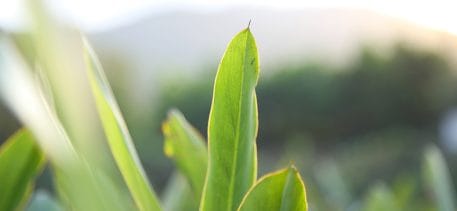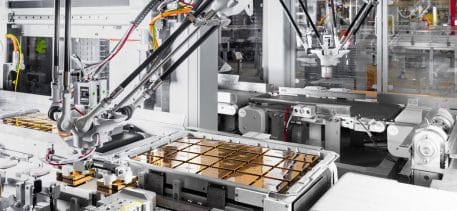Sustainable production at L'Oréal

L’Oréal’s Environment Director, Jean-Michel Pille, explains how the Group is transforming its plants and infrastructures to reduce their environmental impact.
CDP has recognised L’Oréal with three “A” ratings for the second consecutive year. What does that mean for the Group?
Jean-Michel Pille : It’s a fantastic acknowledgement of L’Oréal’s leadership and environmental initiatives. It’s also a fantastic acknowledgement of teams’ engagement and all the work they’ve done in the field all over the world at all our sites, for over 25 years.
In fact, to be perfectly honest, it’s also a great source of pride, because these ratings are established by an internationally and independently recognised organisation. In 2017, only two companies were awarded three “A” ratings out of the more than 3,000 evaluated. This “A” represents the best possible score obtained in each of the three categories: the fight against climate change, water resource preservation and the fight against deforestation. It embodies the quality of the Group’s commitment, its transparency and our great results in each category. As you said, this is the second consecutive year we’ve earned this rating, and we are, yes, truly quite proud.
In the end, what this rating really shows is that we have succeeded in decoupling the growth of our business from our efforts to reduce our environmental impact. We are living proof that it’s possible.
Could you explain how L’Oréal is transforming its plants and infrastructures to achieve these positive impacts for climate change and water resources?
J.-M. P. : We roll out best practices in sustainable production to preserve resources. For instance, we work a lot on the energy efficiency of both our buildings and our industrial processes. Whenever possible, we rely on renewable energy. Currently, about half of all the energy used by our industrial operations comes from renewable sources. We are also working to optimise our processes in terms of water use, and we recycle the water we use directly at our plants.
We also try to develop innovative technological solutions suited to the local context of each of our sites – this is a very important point. For example, we installed wind turbines on the roof of our distribution centre in Dallas in the United States. We worked with the city of Turin, Italy to develop biogas production solutions. We brought our first water recycling system in our Montreal, Canada plant several years ago. And we worked with the authorities of Yichang province in China to power our plant with only renewable energy. There are plenty of other examples, but I can’t cite them all of course.
It is this mobilisation, these initiatives which have led to our current performance levels. Actually, by 2016 we had already exceeded our 2020 goals for CO2 emissions reductions. In 2017, more than 20 of our sites became carbon neutral, meaning they only use renewable energies. And as for water, the Burgos plant in Spain has become our first “dry” factory, which means that all the water used for industrial processes is purified and recycled in a loop on-site.
What challenges will L’Oréal face in the future? How are the teams involved?
J.-M. P. : The first challenge is to reach the ambitious 2020 goals set by our “Sharing Beauty With All” programme, which is, as you know, a remarkable driving force for all of the teams worldwide. For years now, we have put in place a robust internal network for sharing best practices, ideas and accomplishments, which accelerates our progress and helps us capitalise on skills and expertise. It has also helped us to share a culture of resource preservation with our teams in all of the Group’s activities.
To take things even further, we aim to increase the number of carbon neutral sites and “dry” factories, but we also hope to co-create increasingly local solutions for the future – near and distant – with specialised partners. We got started last year with Suez. Our goal is to have a positive impact everywhere we operate.
We also want to bring our entire ecosystem, every stage in our value chain, into the process of co-creating tomorrow’s solutions. We aim to include our suppliers, who are already very involved, our transportation partners, our clients and even our consumers. Together and in this way, we intend to remain the leader in these fields and to continue to ensure our growth and our efforts to reduce our environmental impact remain decoupled.
Thank you very much.
J.-M. P. : Thank you.



